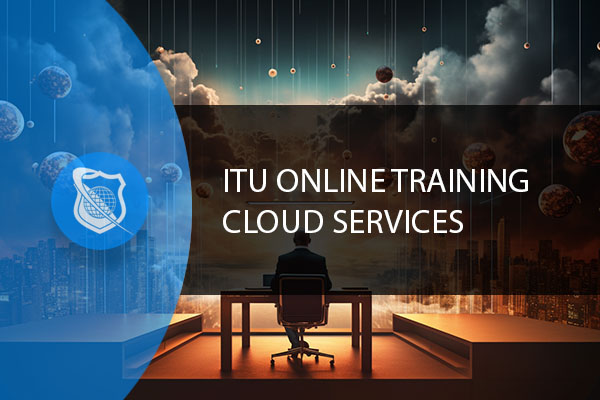Introduction
If you’ve ever caught yourself pondering, “What is the cloud and how does it work?”, then you’ve landed on the right article. This all-encompassing guide seeks to answer that very query, breaking down the intricacies of this captivating technology. Whether you’re a student, a business professional, or someone simply curious about modern computing, this piece is for you. We’ll delve into the nitty-gritty of how cloud computing works, clarify the definition of the cloud, and offer pragmatic advice on how to use the cloud for storage purposes. We’ll explore where your files actually go when you save them “in the cloud,” why cloud computing is now an industry standard, and what cloud technology means for the future.
Table of Contents
- History of the Cloud
- What Exactly is the Cloud
- How Cloud Computing Works
- Where is the Cloud Located
- How to Use the Cloud: Practical Applications
- Security in the Cloud
- Misconceptions About the Cloud
- Conclusion
History of the Cloud
The story of the cloud is one of innovation and continual evolution. Long before “cloud computing” became a buzzword, or people started discussing the cloud meaning in tech circles, the foundational elements of the cloud were already in existence. During the initial days of computing, businesses and individuals alike had to rely heavily on in-house servers and local computing resources. The notion of accessing files and software over a network existed, but was mostly confined to specific corporations or academic settings.
As technology progressed, the limitations of this setup began to show. Companies found it challenging to scale their operations up or down in response to demand, and hardware costs were a constant concern. Enter cloud computing: a new paradigm that promised to revolutionize how computing works. It provided a scalable, flexible solution to computing needs, laying the groundwork for many of the online services we use today.
In a world where phrases like “in cloud or on cloud” confuse many, understanding the history of the cloud helps demystify its current forms. It allows us to appreciate the intricacies of cloud technology and how it has come to play such a vital role in modern life, from hosting your favorite streaming services to storing immense amounts of data for global corporations.
Through a complex web of servers, data centers, and optimized delivery systems, the cloud could be anywhere and everywhere, redefining the idea of what exactly is “local” in our increasingly interconnected globe. The advent of cloud computing transformed the way we think about computing and storage, shifting away from a reliance on local hardware and toward a new era of online access and remote storage solutions.

Get Ahead In Cloud Computing
At ITU, we offer an exclusive Cloud Computing training series designed to prepare you for certification and/or to help you gain knowlege of all Cloud based platforms including AWS, Azure and Gooogle Cloud.
Get access to this exclusive Cloud Computing Training today.
What Exactly is the Cloud – What is the Cloud and How Does It Work?
When people ask, “What exactly is the cloud?”, they are often met with varied answers that can be both enlightening and confusing. At its most fundamental level, the cloud isn’t a physical entity but rather a complex network of servers. These servers store data, applications, and various other forms of content on the Internet, instead of on your personal computer’s hard drive or an in-house server. This distinction is crucial when you consider how to use the cloud effectively, as it offers flexibility and accessibility that traditional forms of storage cannot.
Understanding the cloud definition involves acknowledging its multifaceted nature. The term “cloud” covers a broad spectrum of services and functionalities. One of the most straightforward applications is file storage. If you’ve ever used Google Drive, Dropbox, or iCloud, you’re already familiar with how to use the cloud for storage. These platforms allow you to save files “in the cloud,” meaning they are stored on remote servers that you can access from virtually any device with an internet connection. But it’s not just about storing individual files; cloud services can host everything from your email to complex databases and software applications.
Web-based email services like Gmail and Yahoo Mail are another typical example. When you send or receive an email using these platforms, you’re using the cloud. Your messages aren’t stored on your device but are kept “in the cloud,” accessible whenever you log into your account, from whichever device you choose.
Cloud services also extend to more complex functionalities. Consider databases that were once the exclusive domain of large, local servers. Now, cloud providers offer hosted databases that you can access and manage through a web browser, without the need for in-house hardware or extensive IT know-how. This function clarifies the cloud’s role in terms of software as a service (SaaS), a term often used in the tech industry to describe software applications delivered over the internet.
The term “cloud” also touches on more advanced computing resources. For those delving into artificial intelligence, machine learning, or big data analytics, specialized cloud computing resources are available. These resources show the adaptability and scalability of cloud technology, as they can be tailored to suit various professional requirements and computational tasks.
In summary, the cloud is a versatile, robust system that transcends traditional computing models. It shifts the focus from what is locally available on your computer or within your physical reach to what can be accessed and utilized across a network of internet-connected servers. This shift enables unprecedented levels of flexibility, scalability, and accessibility, redefining how cloud computing works in our daily lives and professional environments.
How Cloud Computing Works
Cloud computing has been a groundbreaking development in the world of technology. But what does it mean when we say that computing “services” are being delivered over the Internet? Fundamentally, cloud computing involves various services, such as servers, storage, databases, networking, software, and even more specialized functions like analytics and machine learning. These services are made available to businesses and individual users through the Internet, making it unnecessary to own and maintain physical servers and other infrastructure.
At the heart of this system is the concept of virtualization. In a traditional setup, one server would perform one function — say, hosting a website or running an application. But through virtualization, one physical server can be divided into multiple virtual servers, each capable of performing its own function. This feature is part of what makes the cloud so scalable and adaptable.
When it comes to how cloud computing works, your data plays a starring role. Think of your files, which are broken down into packets and stored across multiple servers in various geographic locations. The beauty lies in the cohesiveness of this system; the cloud infrastructure seamlessly stitches together these pieces, ensuring that you can access your data anytime, anywhere. Whether you’re looking to understand how to use cloud drive systems for personal use, or how cloud technology serves large-scale data analytics for businesses, the underlying processes are designed to be as user-friendly as possible. All you typically need to access your or their cloud is a simple interface like a web browser, and from there, the sky’s the limit.
Where is the Cloud Located
The question “Where is cloud data stored?” often pops up, especially among those new to the technology. While cloud storage gives the impression of being an abstract, omnipresent entity, in reality, the data resides in physical locations: massive data centers strategically situated across the globe. These data centers are the backbone of cloud services, housing the hardware that makes cloud computing possible. When you store files in the cloud, you’re essentially renting storage space in one or more of these centers.
Unlike traditional storage methods where your data is tied to a specific machine or locale, the cloud offers unparalleled flexibility. Data centers work in concert to ensure that your files are not only secure but also accessible whenever you need them. This means that even if one data center faces an outage or issue, another can step in, offering a level of reliability that’s hard to match with traditional computing methods. This kind of redundancy is part of what makes the cloud such an attractive option for both personal and professional data storage needs.
In essence, while it may feel like your files are floating somewhere in cyberspace when you’re working on cloud systems, they are firmly grounded in these state-of-the-art data centers. Understanding this can help demystify the often nebulous concept of “the cloud,” giving you a clearer picture of where your data goes when you opt to store it in the cloud.

Get Ahead In Cloud Computing
At ITU, we offer an exclusive Cloud Computing training series designed to prepare you for certification and/or to help you gain knowlege of all Cloud based platforms including AWS, Azure and Gooogle Cloud.
Get access to this exclusive Cloud Computing Training today.
How to Use the Cloud: Practical Applications
Many people are intrigued by cloud technology but are unsure about how to use it in their daily lives. The good news is that utilizing the cloud is often simpler than it appears. Here’s a rundown of some practical applications:
File Storage
If you’re pondering how to use the cloud for storage, you’ll find it is incredibly straightforward. Cloud storage services like Google Drive, Dropbox, and OneDrive offer user-friendly interfaces that allow you to store files such as documents, images, and videos. You can access these files from anywhere, at any time, as long as you have an internet connection. This convenience revolutionizes the way you can manage and share files, making the age-old practice of emailing files to yourself or carrying a thumb drive around virtually obsolete.
Web-Based Email
Using web-based email services like Gmail or Yahoo Mail is another way you’re interacting with the cloud. Your email data is stored on the service provider’s servers, allowing you to access your emails from any device connected to the Internet. This functionality exemplifies how cloud computing works to make your life easier, providing you with the flexibility to manage your communications on-the-go.
Streaming Media
When you stream your favorite shows on platforms like Netflix or listen to music on Spotify, you’re engaging with the cloud. These services use cloud computing to store vast libraries of content, delivering it to you through a simple interface. Cloud’s scalability and high computing power make it possible to stream high-quality content without any lags or delays, enhancing your overall viewing or listening experience.
Security in the Cloud
As the cloud becomes an increasingly integral part of both personal and professional realms, questions about security naturally arise. How does cloud technology work when it comes to keeping your data safe? Cloud service providers prioritize security and have developed robust measures to protect your information.
The first line of defense usually involves authentication processes, such as username and password combinations, or more advanced methods like two-factor authentication (2FA) [1]. Once you pass this stage, encryption comes into play, encoding your data so that it’s unreadable to anyone who doesn’t have the authorized access. These are standard security measures, but many providers go beyond this, offering features like firewall protection, intrusion detection systems, and secure data backups.
If you’re an organization thinking about working on cloud platforms, compliance should also be on your radar. Reputable cloud service providers are compliant with various industry regulations and standards to ensure that your data is not only secure but also managed in a manner consistent with legal requirements.
In summary, while there are valid concerns about data security in the cloud, the measures put in place by reputable cloud providers offer a level of protection that often surpasses what most organizations can implement on their local systems. By understanding the security mechanisms that come into play when you store files in the cloud, you can make more informed decisions about how to manage and protect your data.
Misconceptions About the Cloud
While the cloud has become a staple in modern computing, various myths and misconceptions continue to surround it. Let’s address some of the most common ones:
Device Limitations
One common misconception is that the cloud can only be accessed from a computer. In reality, the cloud is far more versatile. You can access cloud services from virtually any device with an Internet connection, including smartphones, tablets, and even smart TVs. This multi-device accessibility exemplifies the flexibility of how cloud computing works and underscores its benefit as a universally accessible resource.
Security Concerns
Another prevalent myth is that storing your files in the cloud is inherently riskier than using traditional, on-premise solutions. However, as we’ve touched on earlier, cloud providers invest heavily in security protocols and measures. Encryption, authentication, and regular security audits are just some of the measures in place to protect your data. In many cases, cloud services can offer better security features than a typical in-house system, especially for small to medium-sized businesses that might not have extensive IT security resources.
Cost Implications
Many people assume that cloud computing services are expensive and beyond the reach of individual users or small businesses. However, there is a wide range of pricing models, from free tiers with basic features to subscription-based models that offer more storage and capabilities. Understanding how to use the cloud effectively allows users to select the best pricing model for their needs, often resulting in cost savings in the long run.

Get Ahead In Cloud Computing
At ITU, we offer an exclusive Cloud Computing training series designed to prepare you for certification and/or to help you gain knowlege of all Cloud based platforms including AWS, Azure and Gooogle Cloud.
Get access to this exclusive Cloud Computing Training today.
Conclusion
The cloud, once a complex and misunderstood term, has come a long way in demonstrating its practical applications and benefits. The technology serves not just as a data storage solution but as a robust platform capable of hosting services, running applications, and much more. Whether you find yourself in the cloud or on the cloud, gaining a solid understanding of what exactly the cloud is and how cloud computing works can offer significant advantages, both personally and professionally.
The myths surrounding the cloud often stem from a lack of understanding, but as you delve deeper into how cloud technology works, you’ll find that many of these are easily debunkable. From its flexibility in device access to its robust security measures, the cloud is a resource that is revolutionizing how we interact with technology and manage data.
So, the next time someone asks you to explain the cloud to them, you won’t just offer a vague description of a technological wonder. Instead, you’ll have a comprehensive understanding, capable of dispelling myths and highlighting the very real benefits of cloud computing.
Cloud Storage FAQs : Understanding Where Your Files Go
What is cloud storage and how does it work?
Cloud storage refers to the practice of storing data on remote servers that are accessed from the internet, or “the cloud.” Instead of saving files on your computer’s hard drive or local storage devices, cloud storage allows you to save them to a network of hosted servers managed by third-party service providers. These providers maintain, operate, and manage data storage capacity, offering users and organizations scalable, flexible, and efficient data storage solutions. You upload your files via the internet to these servers, from where you can access, manage, or share them from anywhere, as long as you have internet access.
Is my data safe in the cloud, and what security measures are in place?
Data security is a top priority for cloud storage providers. They implement various security measures to protect your data, including encryption, which scrambles your data to make it unreadable without a decryption key. Additionally, providers use secure data centers with physical security measures, firewalls, intrusion detection systems, and regular security audits. It’s also important for users to adopt good security practices, such as using strong, unique passwords and enabling two-factor authentication when available.
How can I access my files stored in the cloud?
Accessing your files stored in the cloud is straightforward. You can access your cloud storage via a web browser, desktop application, or mobile app provided by the cloud service. Once logged in, you can view, download, upload, or share your files from any device with internet connectivity. This flexibility ensures that your files are always within reach, whether you’re at home, in the office, or on the go.
Can I share files from my cloud storage with others?
Yes, one of the key benefits of cloud storage is the ease with which you can share files and folders with others. Cloud services often allow you to share files via email, link, or even collaboration features within the platform itself. You can typically control the level of access (e.g., view-only or edit permissions) and set expiration dates for shared links to ensure your files are shared securely and according to your preferences.
What happens if I run out of storage space in the cloud?
If you approach or exceed your cloud storage limit, most providers offer flexible options to increase your storage capacity. This can usually be done by upgrading your subscription plan to include more storage space. Many providers offer a range of plans to cater to different storage needs, from individual users to large enterprises. It’s also a good opportunity to review your stored files and archive or delete any that are no longer needed, freeing up space without needing to upgrade your plan.
























